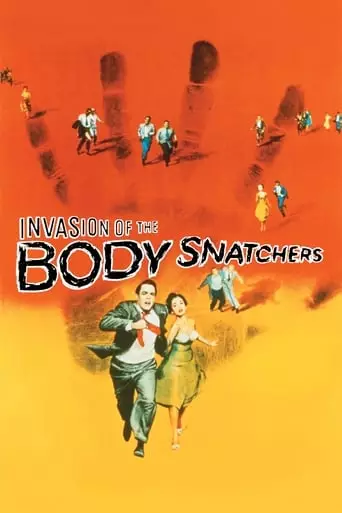
Invasion of the Body Snatchers (1956) Watch Online Free
A small-town doctor learns that the population of his community is being replaced by emotionless alien duplicates.
Invasion of the Body Snatchers (1956) is a chilling science fiction thriller that explores the invasion of an idyllic small town in California by alien pod creatures. Dr. Miles Bennell, a small-town doctor, discovers that the town’s residents are being replaced by emotionless, identical beings grown from mysterious pods. As Bennell investigates further, he and his companion, Becky Driscoll, struggle to uncover the terrifying truth: the aliens are taking over humanity, one person at a time. The film is a race against time as Bennell and Becky fight to escape the alien forces before they too become “pod people.”
The film is a rich allegory with multiple layers of meaning, particularly reflecting the anxieties of 1950s America. One of the primary themes is the fear of conformity and the loss of individuality. The “pod people” are devoid of personal emotions and autonomy, representing a society where individuality is eradicated in favor of a collective, emotionless existence. This theme mirrors fears of communism and McCarthyism, where conformity and groupthink were seen as existential threats to the American way of life.
The film also delves into the notion of paranoia and the breakdown of trust. The growing sense of distrust among the characters—especially as they struggle to determine who has been replaced—creates an atmosphere of tension and unease. This reflects Cold War-era fears of infiltration, espionage, and the fear that one’s friends or family members could secretly be enemies. The horror in the film arises not from external monsters but from the quiet, insidious takeover of human lives, a haunting metaphor for the spread of ideology or even illness.
After watching Invasion of the Body Snatchers, you might feel a mix of unease and fascination. The film’s psychological horror lingers, as it challenges your perceptions of identity, trust, and community. You may feel unsettled by the realization that the greatest threat is not external but rather the erosion of human emotion and individuality. The film’s stark portrayal of societal conformity may make you question the balance between personal freedom and collective security. Moreover, the eerie, open-ended conclusion will leave you reflecting on the cost of conformity and the fragility of human identity in the face of overwhelming forces
